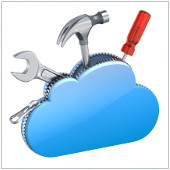3 Disaster recovery myths, debunked
 With advancements in cloud computing, disaster recovery (DR) has become more efficient and affordable than ever. But many business owners still cling to some DR myths that can safely be disregarded. Here are three of those myths, and the sooner you stop believing them, the better.
With advancements in cloud computing, disaster recovery (DR) has become more efficient and affordable than ever. But many business owners still cling to some DR myths that can safely be disregarded. Here are three of those myths, and the sooner you stop believing them, the better.
Myth 1: Tape backups are the best DR solution
Tape backups are physical objects that deteriorate over time. Try listening to a cassette tape from the ’90s. Its sound may be distorted already, or it probably doesn’t work at all. Similarly, your tape backups will start to fail as years pass. At first, only a few files will be affected, but you may gradually lose all your data.
It is also a common practice to store another set of tape backups outside your premises so that they will be safe in case a natural disaster befalls your office. However, if your storage spaces themselves are unsafe from natural disasters, this could pose a problem.
Unlike tape backups, cloud-based backups are safe from deterioration. They are also stored in multiple secured locations that are protected from natural disasters. This means your data backups are as safe as they can be.
What’s more, cloud-based backups save you time in several ways. Data is automatically backed up online, so you don’t need to manually copy information onto your tapes. You also won’t need to manage boxes of tapes, freeing you to focus on your assigned tasks.
Myth 2: The RTOs you want are too expensive
Essential to any DR plan are recovery time objectives (RTOs), or the ideal length of time needed to get everything up and running again to avoid serious losses. Before the cloud, a “swift” recovery time would take days and cost up to six figures.
Cloud and virtualization solutions have made this much more affordable and faster than ever before. Most DR providers can back up your critical data in an hour or two. And if you ever need to recover data, most services can do so in less than a day.
Myth 3: Disaster recovery is for big businesses, not SMBs
Because of the astronomical costs previously associated with DR, only big businesses could afford backup and recovery solutions. But now, the cloud has made these valuable services affordable for small- and medium-sized businesses (SMBs). From dental offices to small retail operations, SMBs can now take advantage of the best DR solutions in the market. Advances in IT and the cloud have also eliminated the obstacles of complexity, costs, and insufficient IT resources.
We hope that by dispelling these myths, you’d be convinced to implement a disaster recovery plan (DRP) for your business. Not only is a DRP necessary to your business continuity, having one is also more affordable and efficient than ever. If you’d like to learn how our disaster recovery solutions can safeguard your business, send us a message and we’ll fill you in.

